A Prototype of An Autonomous Un-Guided Vehicle
Autonomous un-guided vehicle is a driverless system coordinated by controlling software.
It is designed to detect the brightest light spots, overcome obstacles, and recharge its batteries on-the-go.
The research in the field of autonomous vehicles that are able to operate without human control in various environments is increasingly relevant in the modern world of technology. A prototype of an autonomous un-guided vehicle designed on the basis of Himoto Rock Crawler RCF-8 chassis was created to test its capabilities in various environments (Musa, Ajibola, Okafor, Ijeh, & Gibson, 2017). The device contains such systems as light-sensing, obstacle-sensing, data center, and locomotion, which work to achieve three main goals. These goals are overcoming previously unknown obstacles to achieve a destination point, detecting the brightest point of light, and automatic recharging of the batteries with the help of solar panels. The tested prototype has demonstrated that the vehicle might be used in multiple operating environments.
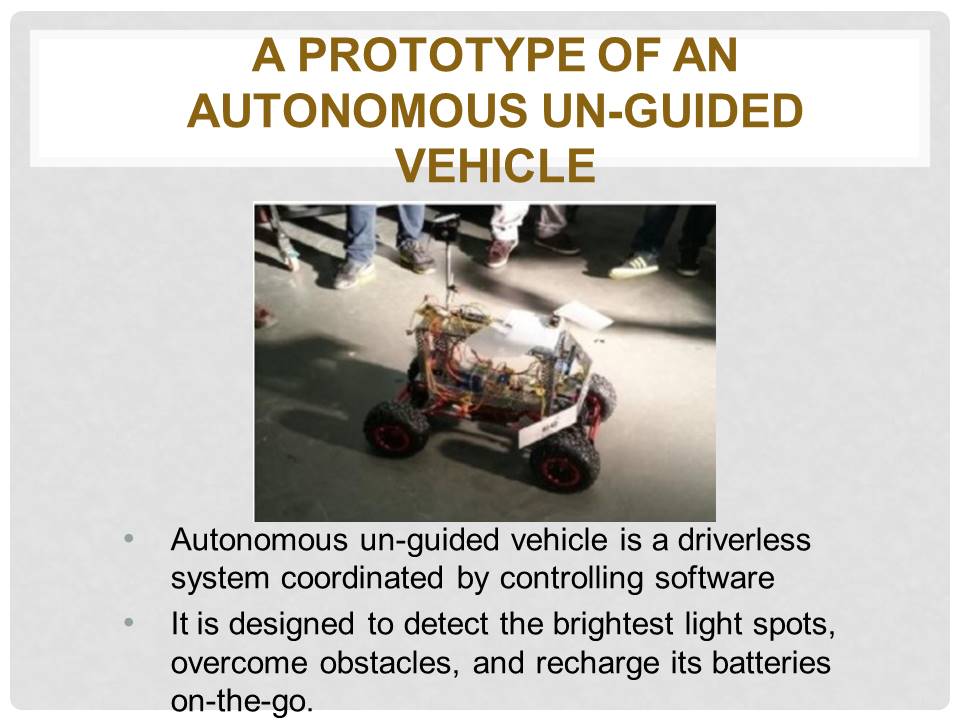
Indoor operating environment
Autonomous vehicles can potentially change the way societies live and cope with different tasks on an everyday basis (Phillips, 2017). One of the possible indoor settings where the autonomous un-guided vehicle could be used with many benefits is warehouses where continuous material transportation is required (“A guide to automated guided vehicles,” 2017). Its advantages for this type of setting include the ability to detect obstacles with the help of a system of sensors and reach the desired destination in the most efficient way. Also, the vehicle is automatically rechargeable, which amplifies its benefits. However, the specifications of the prototype allow it to be used in a much more diversified environment than warehouses. Outdoor environment might be more applicable to utilizing the whole spectrum of operational opportunities provided by the system.
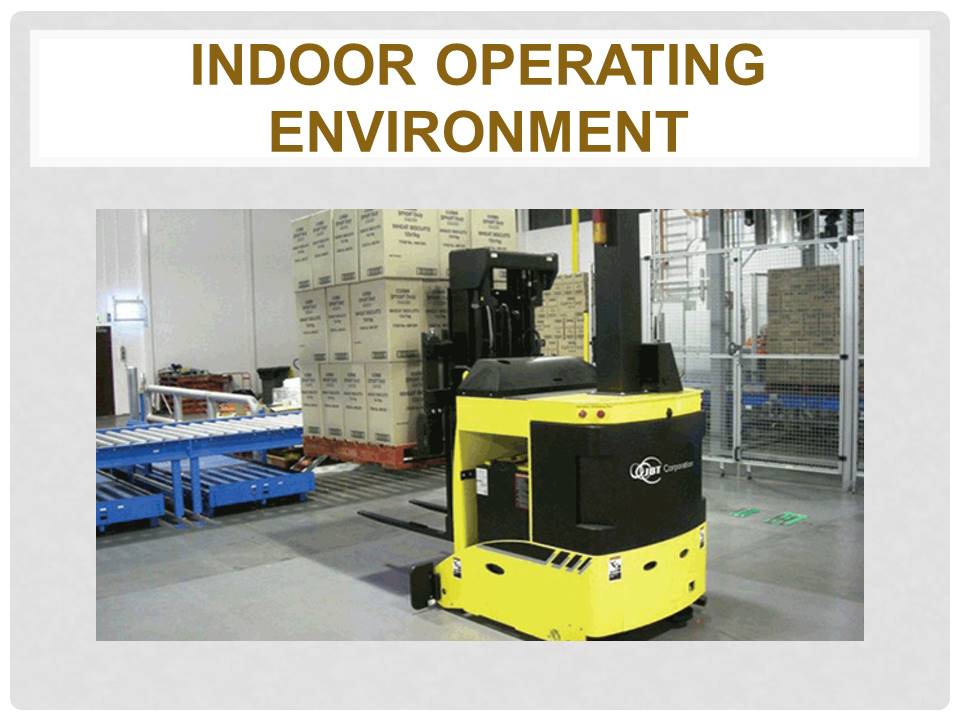
Outdoor operating environment
- Unknown obstacles are easily avoided.
- Light spots are analyzed, and the brightest one is chosen as a destination in need for recharging.
As the testing of the autonomous un-guided vehicle showed, the system can detect and easily avoid previously unknown obstacles, which is an important characteristic for working in the natural environment. Since the vehicle is equipped with an automated charging system, in the outdoor setting, it can fully use its solar panels and stay motionless in the spot if the brightest light. Light spots are analyzed, and the brightest one is chosen as a destination in need for recharging (Musa et al., 2017). The benefit of such a feature is that the vehicle might be used for long distances with the opportunity to be timely recharged without risk of a shutdown. Therefore, the chance of success of any outdoor operation involving the un-guided vehicle increases.
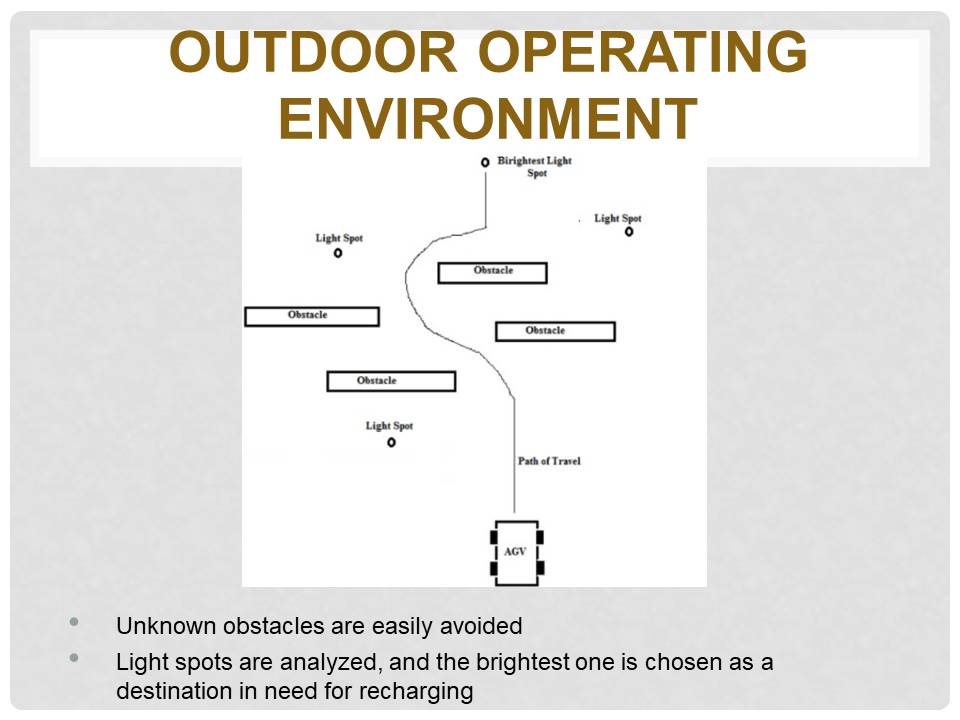
Hazardous operating environment
Automated vehicles are critical in decontamination of nuclear power station after an explosion.
Autonomous un-guided vehicles become an irreplaceable tool when it comes to working in hazardous environments. Such working settings as nuclear power plants after an explosion or the aftermath of other disasters including lethal substances are fatal for human organisms. Therefore, it is crucial to employ robots and automated systems that are capable of working in dangerous environments and enabling people’s safety (“How robots are becoming critical players in nuclear disaster cleanup ,“ 2016). The radiation to which the workers are exposed when eliminating the remains of hazardous substances at a disaster location might be avoided if an automated vehicle is used (Martin et al., 2016). The well-designed software allows the machine keep to the destination point and operate even in the darkness that enables its wide applicability in a hazardous environment.
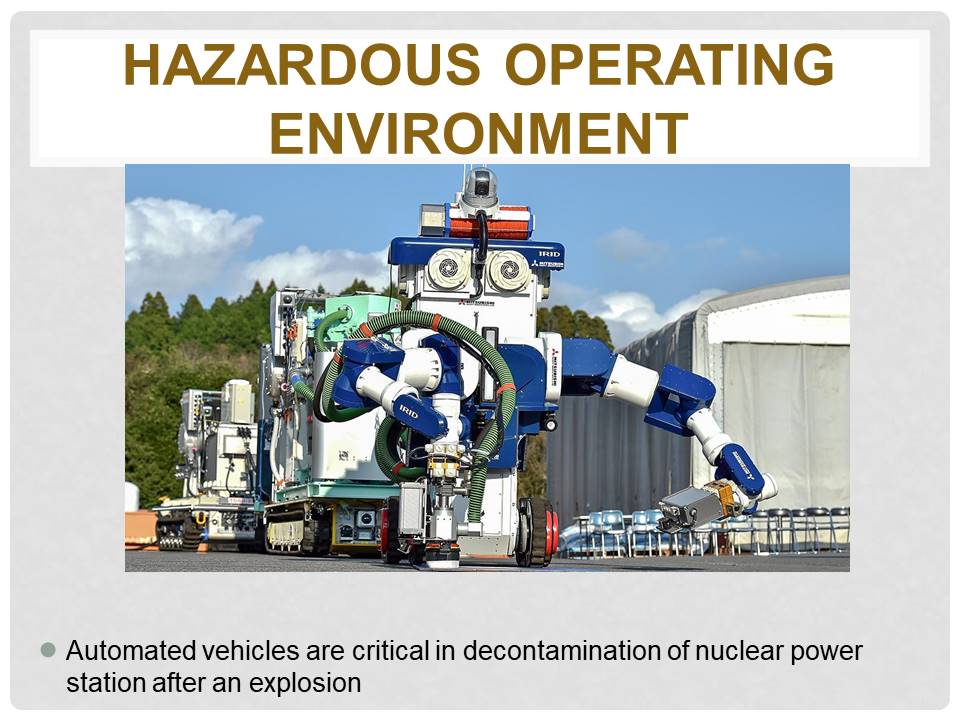
Summary
- Autonomous un-guided vehicle is multifaceted.
- It is capable of analyzing and overcoming diverse obstacles.
- It detects light spots and chooses the brightest one.
- The vehicle recharges on-the-go.
- The system is applicable in indoor, outdoor, and hazardous operating environments.
Autonomous un-guided vehicle is multifaceted because it serves several purposes. Firstly, it is capable of analyzing and overcoming diverse obstacles that were unknown before. Secondly, the vehicle detects light spots and chooses the brightest one for the most efficient recharging. Thirdly, it recharges on-the-go that enables its long-distance destinations and long-term tasks. Based on all the enlisted characteristics, the system is applicable in indoor, outdoor, and hazardous operating environments. It ensures cost- and time-effectiveness in terms of human workforce usage, as well as provides safety in hazardous circumstances.
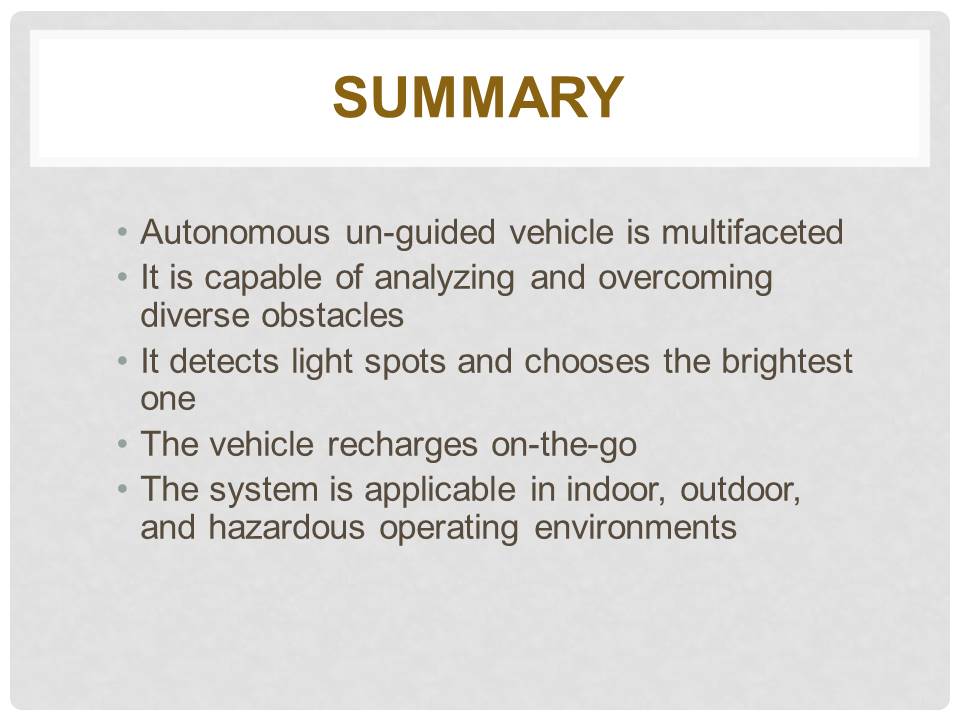
References
A guide to automated guided vehicles [Image]. (2017).
How robots are becoming critical players in nuclear disaster cleanup [Image]. (2016). Web.
Martin, P. G., Payton, O. D., Fardoulis, J. S., Richards. D. A., Yamashikic, Y., & Scott. T. B. (2016). Low altitude unmanned aerial vehicle for characterising remediation effectiveness following the FDNPP accident. Journal of Environmental Radioactivity, 151, 58-63.
Musa, S., Ajibola, A., Okafor, E., Ijeh, I., & Gibson, J. (2017). Design and prototyping of an autonomous un-guided vehicle (AuGV) for hazardous areas usage: Moon rover space exploration vehicle prototyping. Journal of Unmanned System Technology, 5(2), 49-56.
Phillips, E. (2017). The future of autonomous vehicles in American cities. Legislation And Public Policy, 21(287), 288-336.